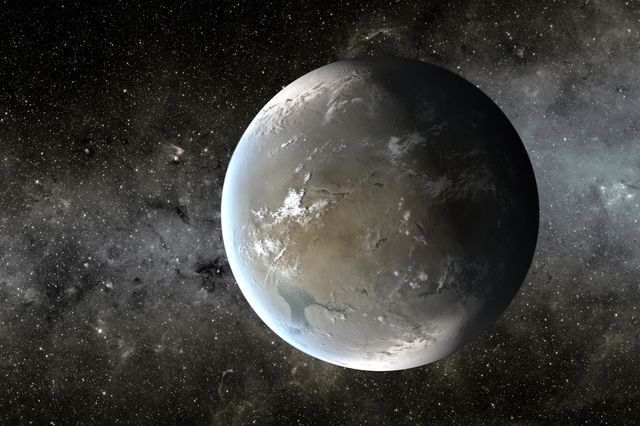Discovered planet closest to us, capable of supporting life

Kepler-62f as an artist
American astrobiologists, having studied the Kopler-62f exoplanet, concluded that it is in orbit, theoretically allowing it to support life in the usual sense. Scientists believe that, judging by the size of the planet, it can be stony and have oceans.
The planet Kepler-62f is 1200 light-years away from us in the constellation Lyra, and 40% larger than Earth. This planet is the outermost of the five planets in its star system. The star of this system is smaller and colder than the sun. Exoplanet discovered in 2013, but there was no detailed data about it.
')
The lead author is Aomawa Shields, Ph.D., physicist and astronomer at the University of California, Los Angeles. Cooperating with several colleagues from the University of Washington, she calculated the options for the composition of the atmosphere and the shape of the planet's orbit.
“We found that there are many variations of atmospheric composition that allows the planet to have liquid water on the surface,” says Shields. “So, she is a good candidate for an inhabited planet.”

Aomava Shields
Carbon dioxide is 0.04% of the Earth’s atmosphere. Since it has a greenhouse effect, it could provide a temperature suitable for life on a planet very distant from a star, but in this case the percentage of its content in the air should be much higher.
The following parameters were varied in the computer simulation:
- thickness of the atmosphere - from Earth, to the atmosphere 12 times thicker
- the concentration of CO 2 - from the earth, to exceed it in 2500 times
- multiple orbit variants
It was received a lot of options in which the planet could potentially be habitable. True, for the year-round maintenance of acceptable temperatures, the planet should have an atmosphere 3-5 times thicker than the earth and should consist entirely of carbon dioxide.
But even if the planet’s atmosphere is not completely CO 2 , some orbit variants will allow the surface temperature to rise above zero for a certain period of each year.
The HNBody computer model was used to calculate the orbit, and the Community Climate System Model and the Laboratoire de Me´te´orologie Dynamique Generic model were used to calculate the global climate models. These models were first combined for astrobiology.
“This method will help us to understand how likely the habitability of certain exoplanets is, given the many factors that we cannot yet determine with telescopes,” Shields writes. “It will help us build a list of preferred objects to study, to explore them in more detail with the help of next-generation telescopes that can see the traces of the presence of life in the atmosphere.”
The Kepler telescope has already discovered more than 3500 exoplanets, more than a thousand of them have been confirmed by astronomers, but only a couple dozen of them are in the habitable zone - that is, their orbit lies in such a way that liquid can exist on the surface of these planets.
Source: https://habr.com/ru/post/394603/
All Articles